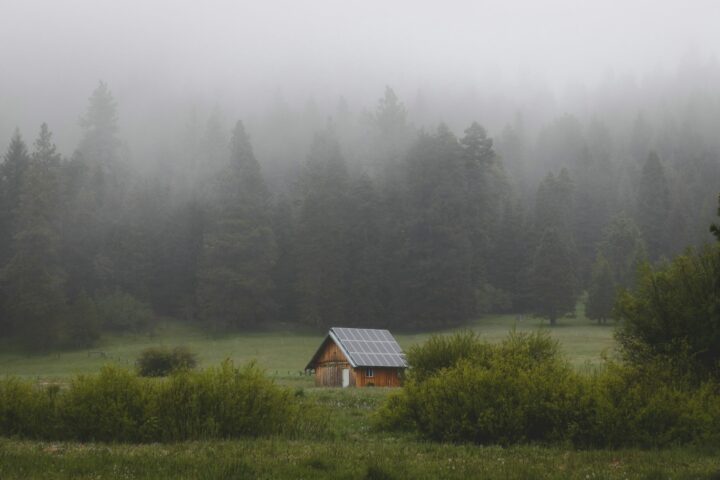The following contribution is from another author.
Sustainability is the motto for many homeowners, who are now turning towards the idea of having a green home. If you are on the look-out for a green property, here’s a word of warning. You’re going to be more likely finding your dream home if you built it from scratch than if you consider only existing properties.
Building from Scratch
Starting from the ground up offers the chance to make sustainability a part of your building process. Unlike retrofitting existing properties, where one might encounter limitations or compromises, a ground-up construction allows for meticulous planning and execution of eco-friendly initiatives.
A custom home-builder can plan the incorporation of cutting-edge energy-efficient systems, strategically positioned insulation, and the use of sustainable building materials that prioritize both environmental friendliness and durability, without sacrificing style and comfort. The ability to seamlessly embed renewable energy solutions, such as solar panels and heat pumps, ensures that your home becomes a beacon of sustainability from the outset.
Furthermore, starting with a blank canvas provides architects and builders with the flexibility to implement innovative construction techniques that optimize energy consumption and minimize environmental impact. This holistic approach to building not only fosters a greener lifestyle but also sets the stage for a home that stands as a testament to responsible living.
Sustainable Furniture and Interior Decor
Sustainable interior decor goes beyond aesthetics; it embodies a commitment to eco-friendly choices. Opt for furniture made from recycled or reclaimed materials.
Which materials should be on your list for sustainable interior design? Consider bamboo, cork, or reclaimed wood to reduce your environmental footprint.. Sustainable decor is about making conscious choices that enhance your living space while respecting the planet. Essentially, when it comes to sustainable interior decor, you want to opt for pieces crafted from recycled or reclaimed materials, breathing new life into discarded resources.
But there’s more than just furniture to consider. Your lighting solution in your living space can also be part of your sustainable strategy with energy-efficient lighting options, such as LED bulbs, which not only last longer but also consume less energy. Besides, the build can help maximize natural light by strategically placing windows to harness sunlight, reducing the need for artificial lighting during the day.
To make your interior design journey even more sustainable, it’s worth upcycling or repurposing existing furniture if you are able to do so. This not only adds a unique touch to your home but also minimizes waste.
Green Thumbs at Home
Your home garden is for creating a space to grow vegetables, herbs, and even keep poultry. This not only provides fresh, organic produce but also fosters a deeper connection with the environment. Besides, it reduces your reliance on products that may not be sustainably sources. However, before approaching the garden strategy, you need a safe storage place to organize and protect your gardening equipment, ensuring everything is readily available for maintaining your sustainable lifestyle. This is precisely where looking for a storage shed for sale can help get you started.
How do you approach creating a garden that provides fresh fruits, vegetables, and even eggs (unless you are vegan)? You will need to establish a designated area for a home garden. Beyond the practicality of growing your vegetables, herbs, and fruits, a garden becomes a canvas that needs to be match to your soil quality and overall capacity to maintain your resources. Choose a variety of plants that thrive in your local climate, ensuring a vibrant and sustainable garden that aligns with the natural ecosystem.
To complement your gardening efforts, you may want to introduce a space for poultry or even small dairy animals (such as a goat) keeping. Chickens, for example, provide not only fresh eggs but also assist in pest control and contribute to nutrient-rich compost through their droppings. Goats can help with getting rid of weeds. This integrated approach to gardening reflects a commitment to sustainability by creating a self-sustaining ecosystem within your own property.
Lifestyle Changes
Living sustainably, whether fully off the grid or semi self-sufficiently, necessitates lifestyle changes. Truth be told, your current lifestyle may not be compatible with your sustainable aspirations. But it’s okay as long as you understand what changes you need to implement.
You will need to shift towards a more intentional and mindful way of living, appreciating the simplicity and beauty of a life connected to the earth. Sustainable living embraces a slower pace to reduce waste, and foster a sense of community within your green haven.
So, to make things clear, this is not just a change in residence but a profound shift in lifestyle. Indeed, the green shift is a transformative commitment to intentional living, where every aspect of daily life reflects a conscious choice to prioritize environmental well-being. This change transcends mere habits; it embodies a holistic approach that reshapes perspectives and actions for a more sustainable and harmonious existence.
Reducing waste becomes crucial for this lifestyle change too. While you want to have a zero-waste mindset, which involves not only recycling but also a conscious effort to minimize consumption, you have ot remain realistic. This requires a learning curve and zero waste may be the ending point. From reusable shopping bags to composting organic waste, every small action contributes to a significant reduction in one’s ecological footprint.
The green shift extends to your diet too. Adopting a plant-based diet, sourcing locally grown produce, and cultivating a home garden for fresh vegetables foster a sustainable food ecosystem.
Finally, what about your car? You can’t afford to go green and be a petrol head! As such, your transportation methods need to evolve, such as biking or electric vehicles. This shift away from traditional modes of transportation, allowing you to promote cleaner air and reducing reliance on fossil fuels.
In conclusion, building a sustainable, semi self-sufficient green home involves a holistic approach. From the initial construction phase to choosing eco-friendly decor, cultivating a home garden, and preparing for life off the grid, every decision contributes to a more harmonious relationship with the environment.
Embrace the changes in lifestyle as opportunities to reconnect with nature and create a sanctuary that reflects your commitment to a greener, more sustainable world. Through these essential considerations, you’ll not only build a home but also cultivate a way of life that celebrates and protects the planet.
















